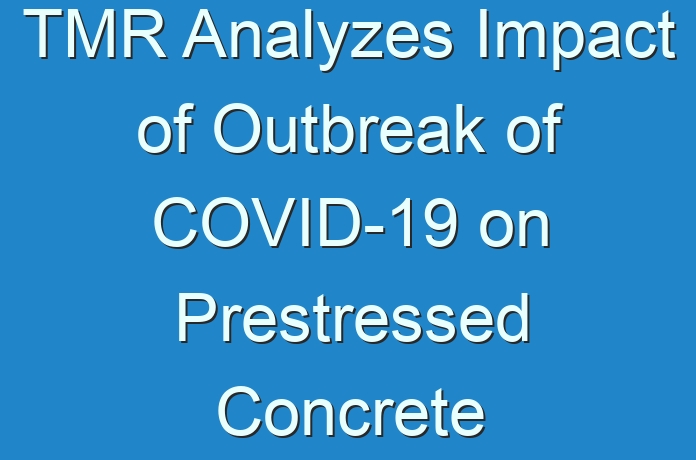
Prestress is a technique to overcome the weakness of concrete during tension. In general, concrete undergoes tension on bottom flange and compression on top flange. In prestressing, the tendons are stressed along the axis and cement is charged; later, when the tendons are released the bottom is compressed and counter balance the compression at the top part of the beam. The characteristic of prestressed concrete is that it allows preset engineering stresses to counteract stresses that occur during service loads. Prestressing eliminates a number of design limits that conventional concrete faces on load and span and it permits building of floors, bridges, roofs, and walls with longer unsupported spans.
The global prestressed concrete market can be segmented based on prestressing types, force applied, application, and region.
In terms of prestressing type, the prestressed concrete market can be classified into external or internal; pre-tension or post-tension; linear or circular; full, limited, or partial; and uniaxial, biaxial, or multi-axial. When prestressing is achieved by tendons located outside the concrete, it is called external prestressing; when tendons are located inside the concrete, it is called internal prestressing. When tension is applied to the element before casting of the concrete, it is known as pre-tension prestressing; when tension is applied to the element after hardening, it is known as post-tension prestressing. Prestressing, when related to members that are flat or straight, is called linear prestressing, and when it is related to members that are curved, it is called circular prestressing.
Request Brochure@
https://www.transparencymarketresearch.com/sample/sample.php?flag=B&rep_id=37223
When the level of prestressing is such that there is no tensile stress in concrete under service load, it is termed as full prestressing. When the level of prestressing is within the cracking stress of concrete, it is called as limited prestressing. Likewise, when the level of prestressing is under service loads and the crack width is within limits, it is referred as partial prestressing. When the prestressing elements are parallel to one axis, it is known as uniaxial prestressing; when the prestressing elements are parallel to two axes, it is known as biaxial prestressing, while multi-axial prestressing means the elements are parallel to more than two axes. External or internal prestressing accounts for the major share of the prestressed concrete market.
REQUEST FOR COVID19 IMPACT ANALYSIS –
https://www.transparencymarketresearch.com/sample/sample.php?flag=covid19&rep_id=37223
Based on force applied, the prestressed concrete market can be divided into mechanical, hydraulic, and electrical. In mechanical prestressing, devices such as gear transmission and lever transmission in combination of screw jacks and pulley blocks are used. Mechanical prestressing is generally employed in mass scale production. In hydraulic prestressing, a large hydraulic jack is used for tensioning of the elements. This method is the simplest among all and produces huge forces. In electrical prestressing, steel wires are heated with electric source and later before placing them in the concrete moulds. The hydraulic prestressing segment accounts for the major market share due to its simplicity in operation and cost effectiveness.
In terms of application, the prestressed concrete market can be segregated into residential, commercial, and industrial. The commercial application segment includes shopping malls, bridges, gymnasiums, school or college auditoriums, and cafeterias. The commercial application segment witnessed the highest growth in the prestressed concrete market during the forecast period.
Buy Now :
https://www.transparencymarketresearch.com/checkout.php?rep_id=37223<ype=S
Based on region, the prestressed concrete market can be divided into North America, Europe, Asia Pacific, Latin America, and Middle East & Africa. The prestressed concrete market in Asia Pacific is anticipated to expand at a significant CAGR during the forecast period owing to the increase in construction activities in the region. North America constitutes a major share of the prestressed concrete market, followed by Europe.
Key players operating in the global prestressed concrete market are US Concrete Products Corporation, Coastal Precast, Oldcastle Precast, Elematic precast technology, Vollert Anlagenbau GmbH, Eco Chimneys Private Limited, and Chengdu Jin Rui Construction&Engineering Machinery Co., Ltd.





